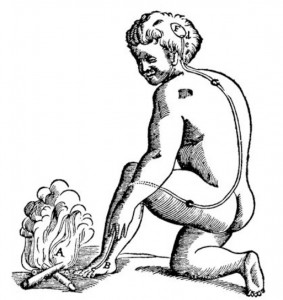By Wayne S. Weidenbaum, M.D.
 Pain is truly important in all of our lives, so that when something is wrong we are alerted to do something about it. However, when pain lasts far longer than the healing process, and the damage is no longer progressing, it can become its own debilitating problem. Chronic pain affects a tremendous number of people in the world and now there are many effective treatments.
Pain is truly important in all of our lives, so that when something is wrong we are alerted to do something about it. However, when pain lasts far longer than the healing process, and the damage is no longer progressing, it can become its own debilitating problem. Chronic pain affects a tremendous number of people in the world and now there are many effective treatments.
Simply put, sensations, like pain (most times), travel through the body in nerves, relay through the spinal cord and reach the brain that translates the message into feelings, thoughts, emotions and actions. The French philosopher, Descartes explained this in the 1600s (diagram above).
Electricity has been used since ancient times to treat pain. Electric Torpedo fish were used 2000 years ago to treat pain from gout and headaches. We have since learned to use electricity much more effectively to treat chronic pain in the form of spinal cord stimulation or “the pacemaker for pain”.
Spinal stimulators are devices that can dramatically reduce certain kinds of pain, by producing electricity next to the spinal cord, which either decreases the painful sensation, or replaces it with a more pleasant sensation such as tingling, vibration or a massaging sensation. Patients can control what the stimulator does with a wireless remote control. The devices have improved dramatically over the last 30 years and now they are very small and very reliable.
Typically a trial or “test drive” is done to make sure a patient would benefit from a stimulator. We do this by placing epidural needles in the back, much like an epidural injection, and then inserting very thin wires through the needles until they are in the best position. We assess the response right in the operating room by turning on the stimulator and asking the (mildly sedated) patient what they feel. The needles are removed and we place a dressing over the wires, which are left in place. The wires are then attached to a small portable battery for the patient to go home. The patient them self will test the amount of pain control for a few days. The wires are removed easily in the office.
If the patient gets significant pain relief from the trial, then we can make it permanent, by making small incisions in the back and implanting the battery and wires as an outpatient. They can then control their stimulator with a remote control. The above is a description of the most common type of stimulator used, but there are many other variations. Spine surgeons can implant more invasive “paddle electrodes”, and we sometimes place the wires over nerves outside the spine for more discrete problems. Some urologists also use stimulators for bladder control problems.
Conditions that are treated this way involve nerve pain, like sciatica, pain that persists after spine surgery, RSD (now called complex regional pain syndrome), pain after amputations, pain from nerve injuries, post-herpetic neuralgia and peripheral neuropathies. This is certainly not a complete list and new approaches and techniques continue to improve our ability to treat pain using these techniques.
Doctors used to think of this treatment as a “last resort”, probably because the equipment and techniques were less refined and reliable years ago. Now we know there is a very important place for this amazingly effective treatment.
The most important factors in achieving a successful outcome are first: careful patient selection to ensure that the patient is motivated to improve and second that the patient has a problem that can respond to this type of treatment. Of course it helps that the doctor has substantial experience and expertise as well.Interventional pain physicians do most of these procedures, but there are some other specialists like neurosurgeons and spine specialists who have experience with this too.
Anyone suffering from a severe chronic pain, for which no treatments seem to be working, may want to schedule a consultation with a physician experienced in the use of spinal stimulators to learn if this treatment may be an option.
WAYNE S. WEIDENBAUM, M.D.
Board Certified in Pain Medicine and Anesthesiology
Dr. Weidenbaum is Board Certified by the American Board of Anesthesiology and the American Board of Pain Medicine. He earned his medical degree at S.U.N.Y. Health Science Center at Syracuse. He completed his residency in Anesthesiology and Pain Medicine at S.U.N.Y. Health Science Center at Syracuse.
He specializes in performing interventional procedures and overseeing medication management to treat acute and chronic pain conditions. He has strong interest in interventional pain management techniques such as radiofrequency lesioning, spinal cord stimulation, and programmable morphine pump implantation.
He is a member of the American Society of Interventional Pain Physicians, American Board of Pain Medicine, American Society of Anesthesiologists, AAPM, FSA, FSIPP
Victor Farris Building
1411 N. Flagler Drive, Suite 4000
West Palm Beach, FL 33401
Phone (561) 833-0882
1111 S. Federal Highway, Suite 228
Stuart, Florida 34994
Phone (772) 221-7966
Check Also
RejuvaNATION MedSpa: Elevating Men’s Health to New Heights
Embark on a Journey to Revitalize Your Vitality Rediscover the joy of a spontaneous sex …
 South Florida Health and Wellness Magazine Health and Wellness Articles
South Florida Health and Wellness Magazine Health and Wellness Articles




